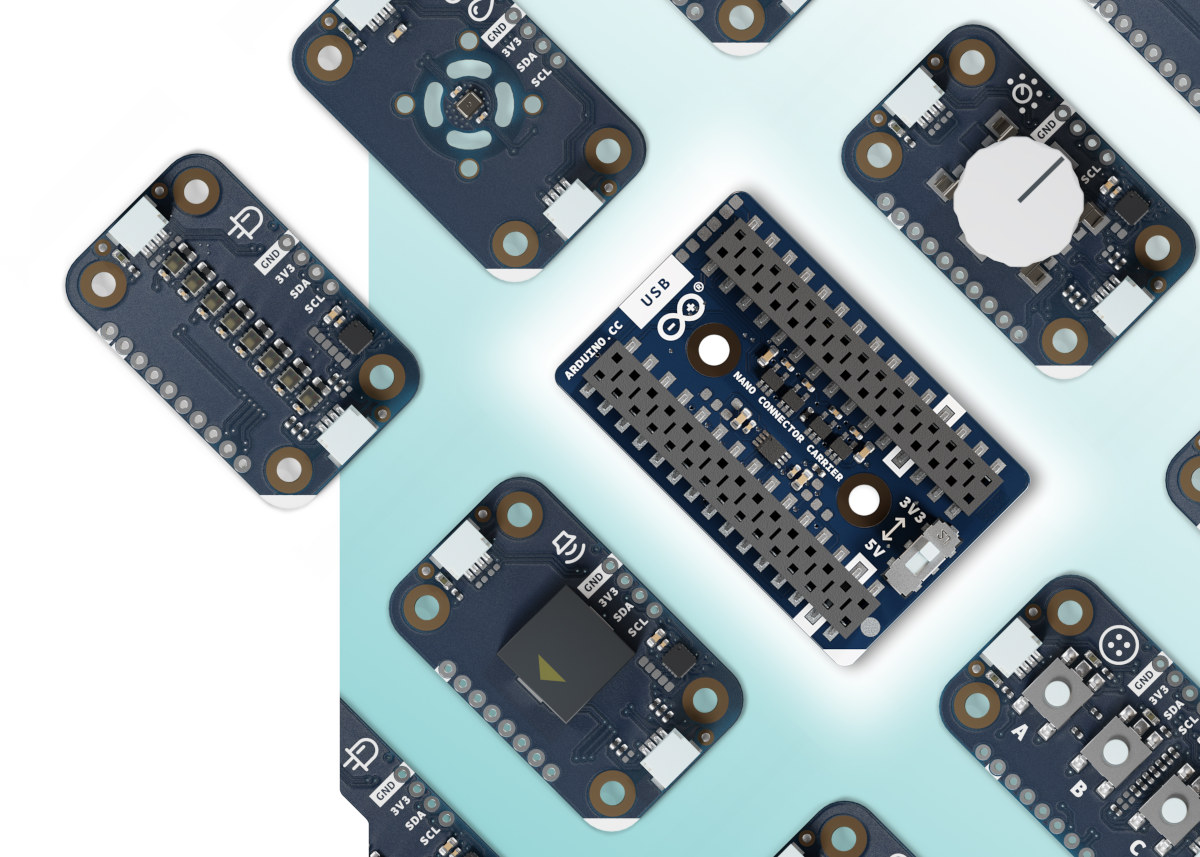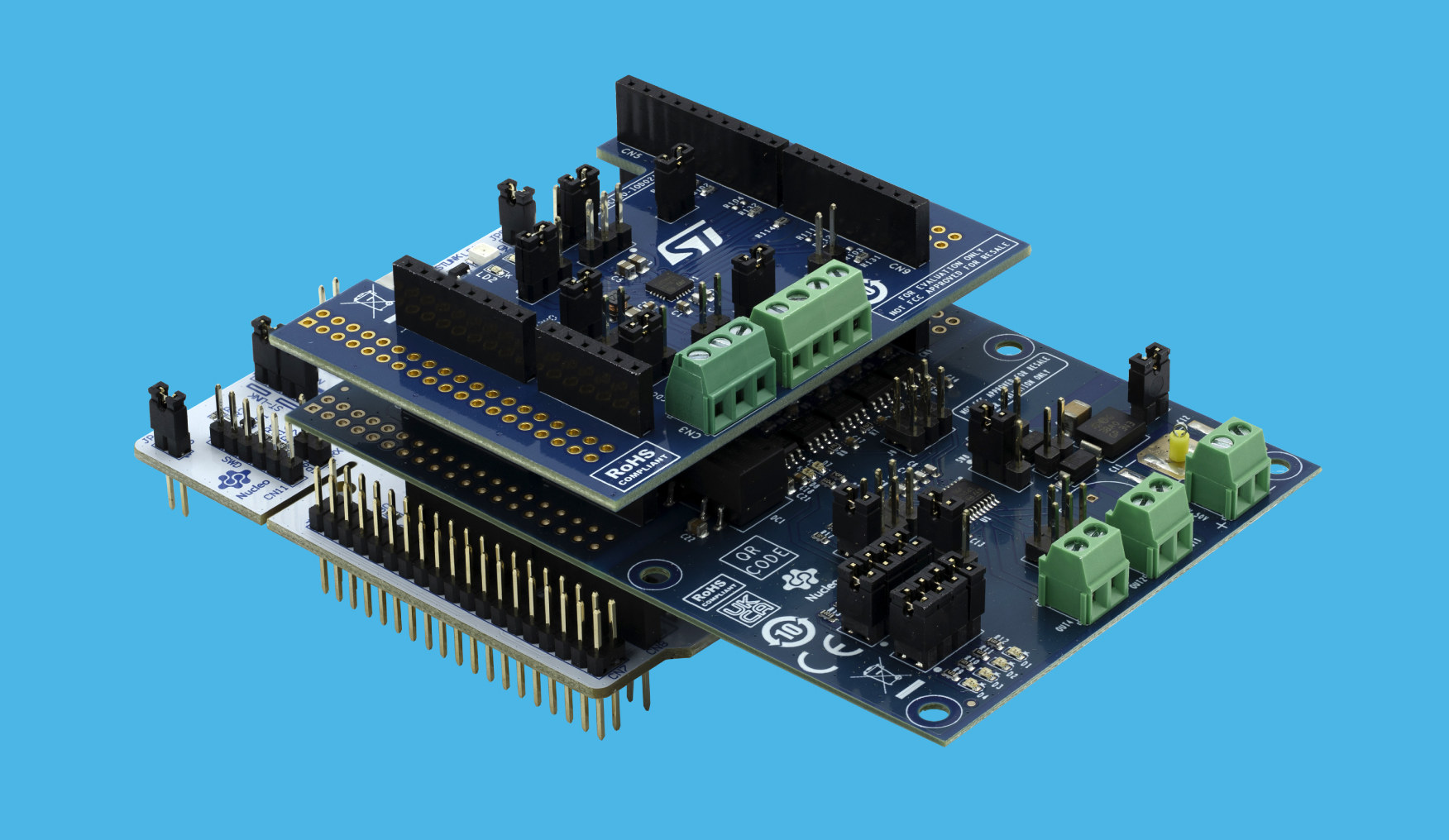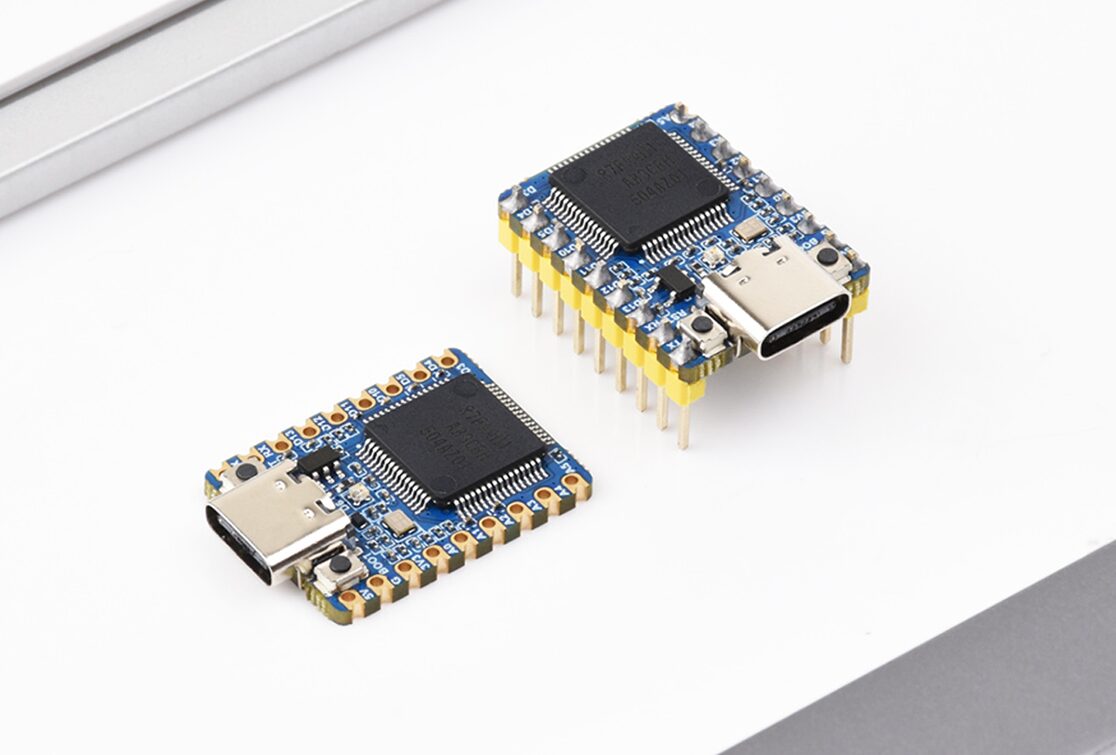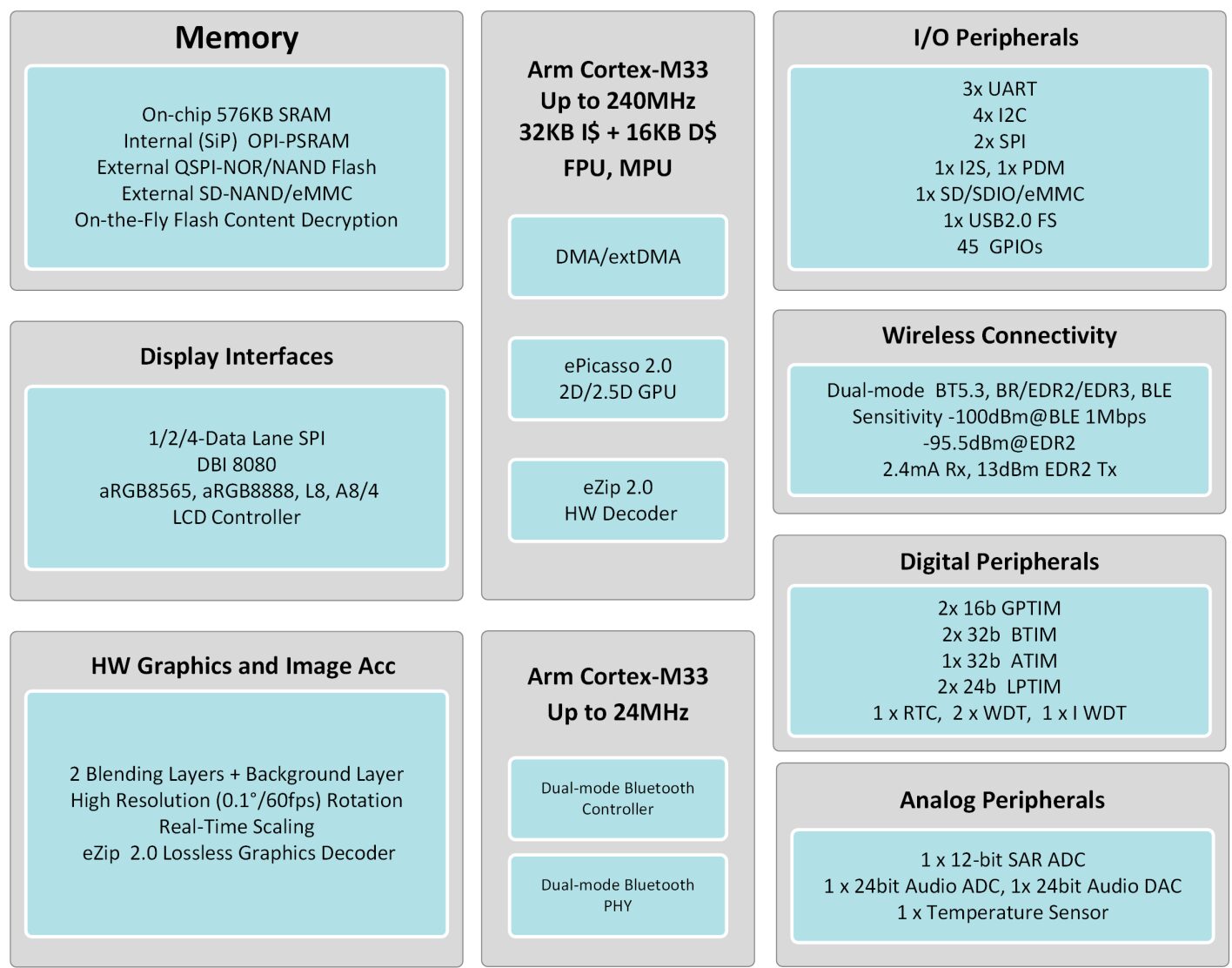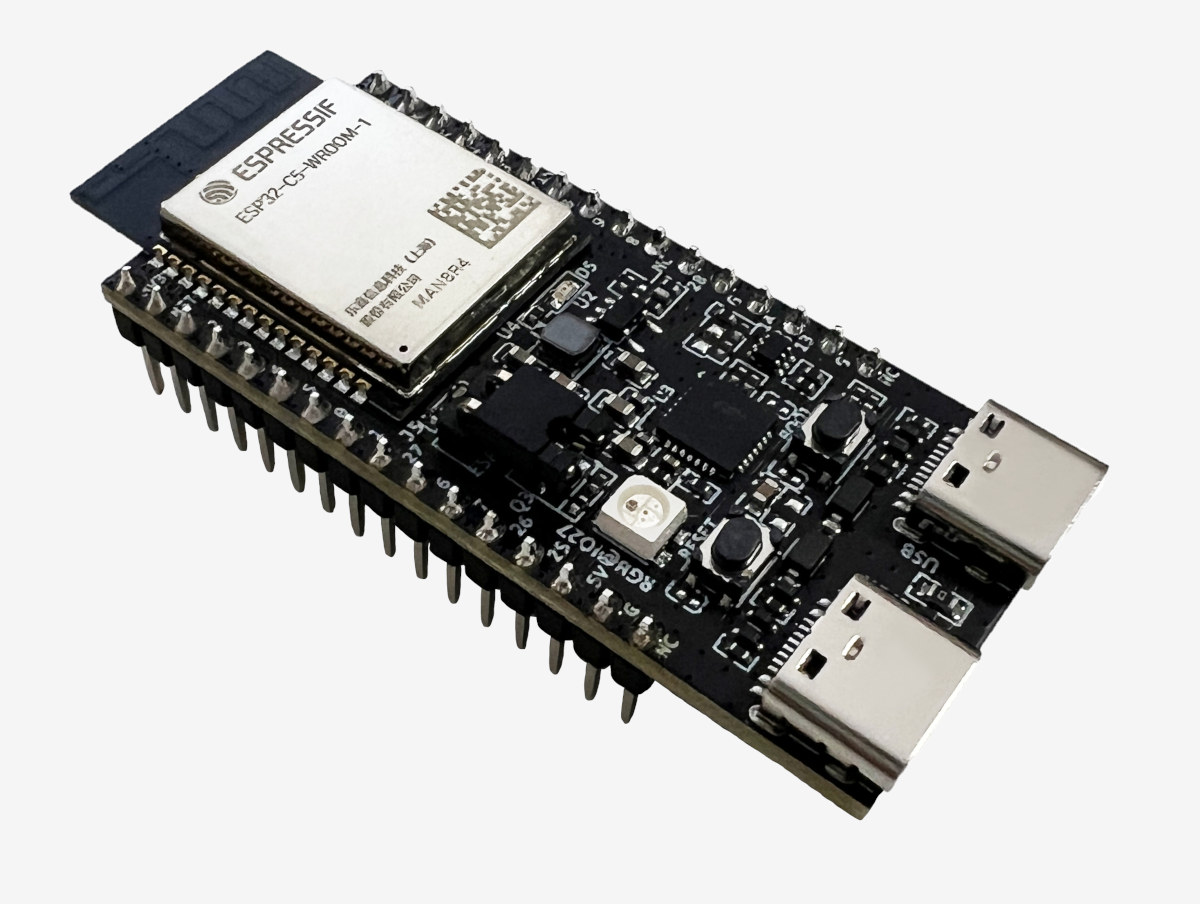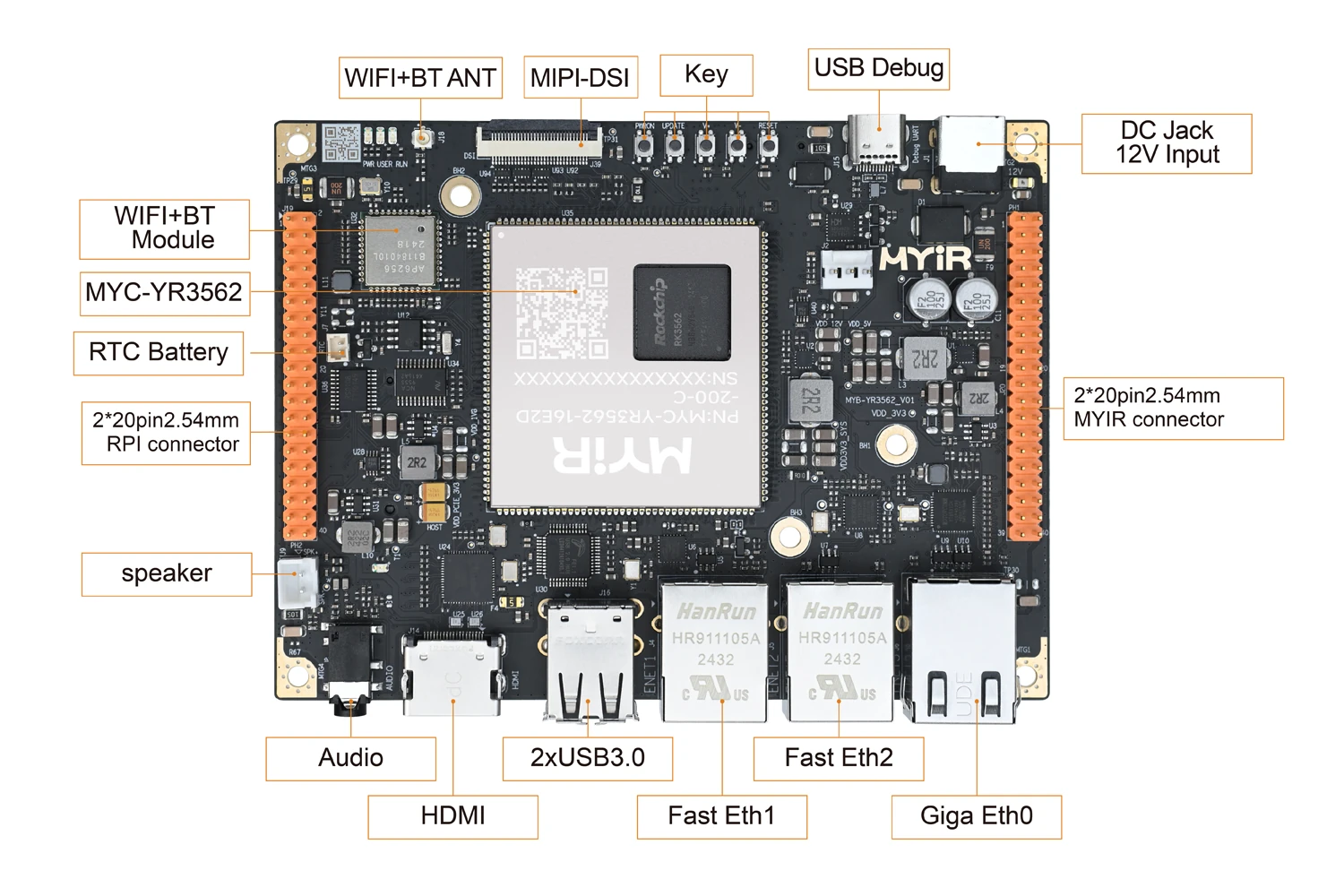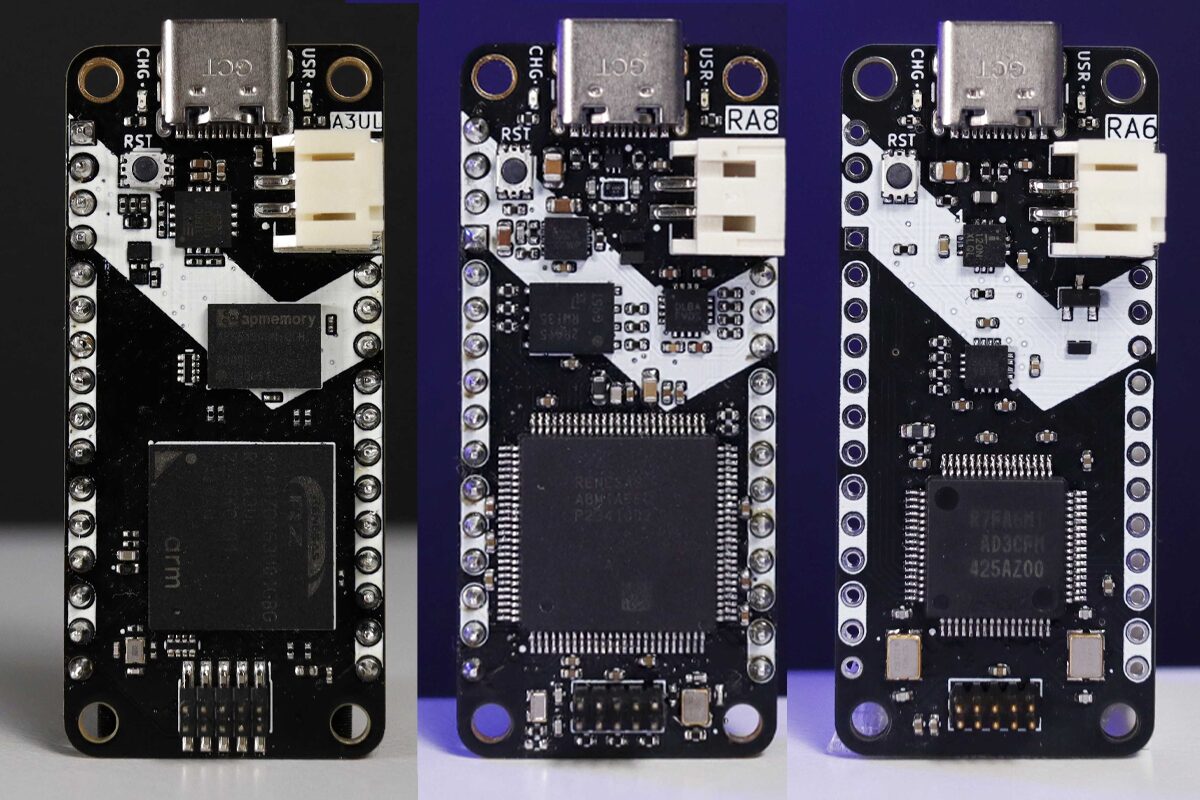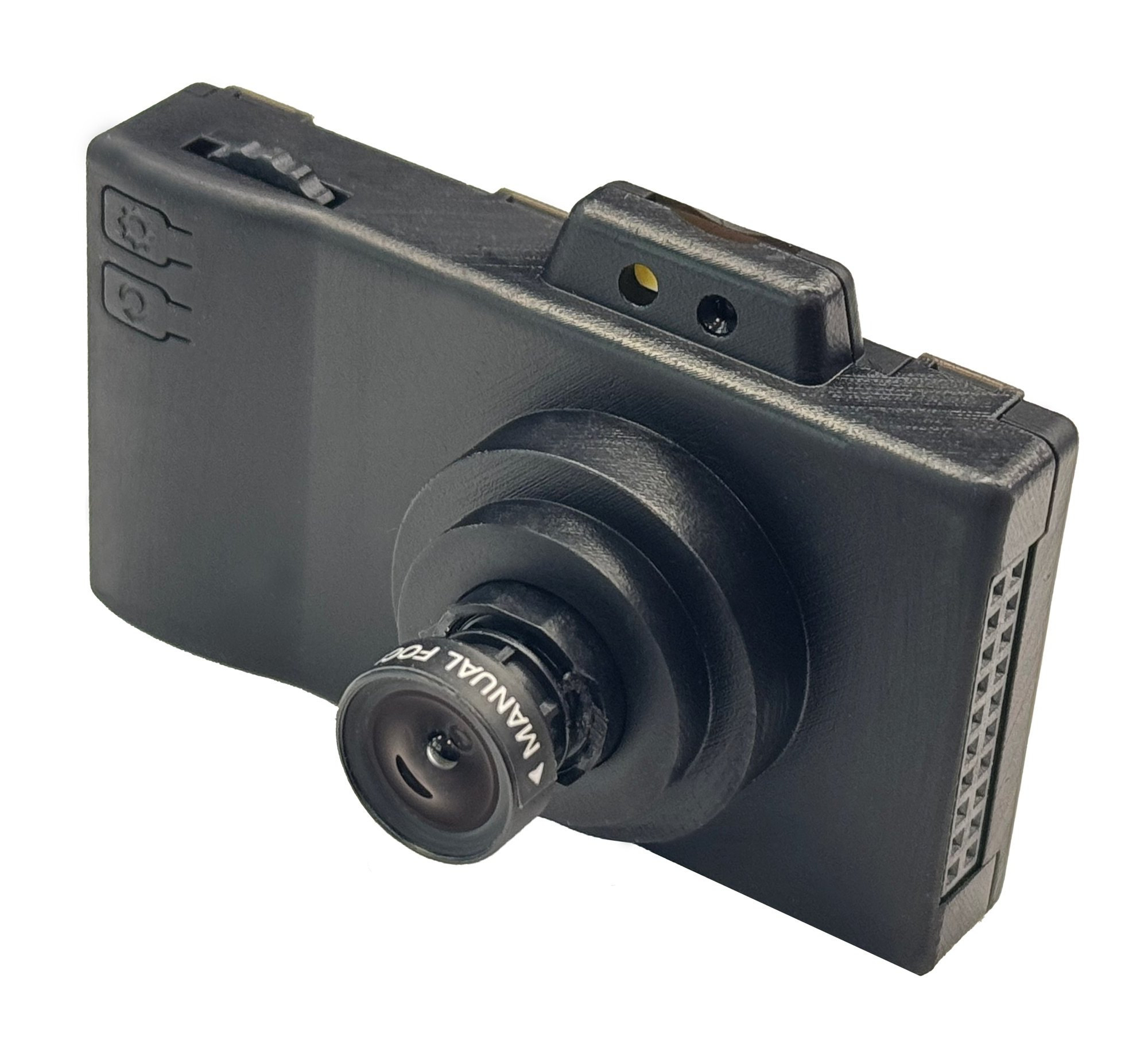The Arduino Nano Connector Carrier is a compact add-on board designed for the Arduino Nano boards to allow easy connection to Qwiic, Grove, and Modulino expansion modules. The company also announced seven new Modulino nodes that are available individually for user input (e.g. button, knob), sensors (IMU, ToF), audio output, and a short RGB LED strip. Arduino Nano Connector Carrier specifications: Storage – MicroSD card reader (SPI) Expansion Interfaces 4x Grove analog/digital I/O connectors – 2x analog, 1x I2C, 1x UART Qwicc I2C connector Double female board header for Arduino Nano series boards I/O Voltage – Switch between 3.3V and 5V Dimensions – 43 x 28 mm The board works with Seeed Studio Grove modules and Arduino Modulino nodes connected over the Qwicc connector: Modulino Knob – a rotary encoder with push button Modulino Pixels – 8x addressable RGB LEDs Modulino Distance – a time-of-flight (ToF) sensor to measure proximity […]
$130 STMicro P-NUCLEO-IOD5A1 modular IO-Link development kit features STM32, transceiver, and actuator boards
STMicroelectronics P-NUCLEO-IOD5A1 is a new modular IO-Link development kit designed to simplify building actuators and sensors by providing all necessary hardware and software for industrial automation projects. We’ve recently come across more solutions for the 3-wire IO-Link bi-directional and point-to-point (P2P) industrial communication protocol based on the IEC 61131-9 standard with ICs and products such as Renesas CCE4511 IO-Link master, STMicro EVLIOL4LSV1 IO-Link actuator board, and an IO-Link Master HAT for the Raspberry Pi. The P-NUCLEO-IOD5A1 devkit appears to be an all-in-one IO-Link combining all hardware needed for prototyping. P-NUCLEO-IOD5A1 content: MCU Board – NUCLEO-G071RB board based on STMicro STM32G071RB Arm Cortex-M0+ MCU @ 64 MHz with 128 KB flash and 36 KB RAM, and equipped with Arduino and ST morpho headers. Transceiver board – X-NUCLEO-IOD02A1 with L6364Q dual-channel IO-Link physical layer IC to handle communication with the IO-Link master. It also includes protection against surges and reverse connection Actuator board […]
Waveshare RA4M1-Zero mini development board features secure boot, firmware encryption, and castellated design
Waveshare RA4M1-Zero is a mini development board built around the Renesas RA4M1 32-bit Arm Cortex-M4 MCU running at 48MHz. The MCU also features 256KB of flash memory, 32KB of SRAM, 8KB of EEPROM, and a built-in Floating Point Unit (FPU). Hardware peripherals include a 14-bit ADC, a 12-bit DAC, a CAN bus controller, an onboard USB 2.0 interface, and WS2812 RGB LED. The MCU also supports firmware encryption, secure boot, and tamper-proof security features to ensure application safety. Its small size (23.5 x 18mm) and castellated module design make it suitable for space-constrained applications, including IoT devices, industrial control systems, secure embedded systems, and compact sensor nodes. RA4M1-Zero mini development board specifications: MCU – Renesas RA4M1 (R7FA4M1AB3CFM) as found in the Arduino UNO R4 CPU 32-bit Arm Cortex-M4F @ 48MHz Memory – 32KB SRAM Storage – 256KB Flash, 8KB EEPROM USB – USB 2.0 device interface via USB Type-C connector […]
SiFli SF32LB52J big.LITTLE Arm Cortex-M33 Bluetooth MCU powers the Core Time 2 smartwatch
SiFli SF23LB52J is a Bluetooth 5.3 microcontroller part of the SF32LB52x family with two Cortex-M33 in big.LITTLE configuration with a 240 MHz high-performance core for user application/GUI and a 24 MHz low-power core to manage the Bluetooth part. A few months ago, Eric Migicovsky, the founder of the smartwatch company Pebble, and now Core Devices, introduced the Core 2 Duo and Core Time 2 smartwatches running PebbleOS open-source firmware that were mostly relaunches of the never-released Pebble 2 and Pebble Time 2 with some tweaks. We already knew the Core 2 Duo would be based on a Nordic nRF52840 Arm Cortex-M4F microcontroller, however, the one for the Core Time 2 was kept secret. That’s until today, as Eric has just announced that the Core Time 2 would be based on the SiFli SF23LB52J MCU, since the smartwatch required an MCU with more RAM and processing power, and SiFli also offers […]
ESP32-C5 dual-band WiFi 6 SoC enters mass production, ESP32-C5-DevKitC-1 board launched for $15
Espressif Systems has just started mass production of the ESP32-C5 RISC-V wireless microcontroller with dual-band (2.4/5 GHz) WiFi 6, Bluetooth LE, and 802.15.4 (Zigbee, Thread) connectivity. The ESP32-C5-DevKitC-1 development is now available for about $15 on AliExpress, and should soon show up on the company’s Amazon store. So far, WiFi-capable Espressif microcontrollers have only supported 2.4 GHz WiFi since it’s cheaper and offers better range for IoT applications, but some applications may benefit from 5 GHz WiFi, so the company unveiled the ESP32-C5 dual-band WiFi 6 and BLE RISC-V MCU in June 2022. Design probably took longer than expected, but we noted documentation for an ESP32-C5 beta board in March 2024, and finally, the company has just announced that mass production has started. We’ll have a closer look at the ESP32-C5-DevKitC-1 board in this article, since it is different from the beta board. ESP32-C5-DevKitC-1 specifications: Wireless module – ESP32-C5-WROOM-1 SoC […]
Small (45x43mm) system-on-module packs Rockchip RK3562 AIoT SoC, 16GB eMMC, 2GB RAM, and PMIC
MIYR Tech MYC-YR3562 is a small 45x43mm system-on-module that packs a Rockchip RK3562 or RK3562J quad-core Cortex-A53 AIoT SoC with a 1 TOPS AI accelerator, up to 2GB LPDDR4, 16GB eMMC flash, 32 Kbit EEPROM, and a PMIC. To keep the module small while making no compromise on the number of I/Os offered, the company designed the module with 164 castellated holes (LCC – ) and 58 pads (LGA). That means the MYC-YR3562 system-on-module gets all interfaces from the RK3562(J) SoC, including Gigabit Ethernet, USB 3.0, PCIe 2.1, RGB, LVDS, and MIPI-DSI interfaces, camera inputs (MIPI-CSI), and a range of low-speed I/Os. MYC-YR3562 SoM specifications SoC – Rockchip RK3562 or RK3562J CPU RK3562 – Quad-core Arm Cortex-A53 quad-core @ 2.0 GHz RK3562J – Quad-core Arm Cortex-A53 quad-core @ 1.2 GHz (stock, overclock up to 1.8 GHz) GPU – Mali-G52-2EE with support for OpenGL ES 1.1/2.0/3.2, OpenCL 2.0, Vulkan 1.0/1.1 AI accelerator […]
Zalmotek RA6M1, RA8M1, and RZ/A3U SoMs follow Adafruit Feather form factor, support carrier board for robotics and industrial control
Romanian company Zalmotek has recently introduced three new SoMs, the RA6M1, RA8M1, and RZ/A3UL, and a modular carrier board designed for embedded applications such as robotics, industrial control, and edge computing. There are a few things that I find interesting about this setup. The SoM comes in Adafruit Feather form factor and, as a result, supports various Adafruit FeatherWings. The modular carrier board supports the Dynamixel motor driver module, the Particle M-SoM breakout module, Ethernet, and CAN modules. The RA6M1 Feather SoM is powered by a Renesas RA6M1 Arm Cortex-M4 CPU at up to 120 MHz, with 512 KB flash and 96 KB SRAM while the RA8M1 Feather SoM features a Renesas RA8M1 64-bit Arm Cortex-M85 running at up to 360 MHz with 128 Mbit SPI flash, the RZ/A3UL Feather SoM is based on a Renesas RZ/A3UL 64-bit Arm Cortex-A55 CPU at up to 1 GHz, with 512 Mbit OctaFlash […]
Espressif Systems ESP32-P4-EYE development kit looks like a camera
Espressif Systems’ ESP32-P4-EYE is a development kit designed for AI vision applications that looks like a standard camera. It combines an ESP32-P4 RISC-V microcontroller with an ESP32-C6 WiFi 6, BLE, and 802.15.4 SoC, and is equipped with a MIPI-CSI camera, a 2MP display, a microphone, and a MicroSD card to store photos or videos. There’s also a rotatory encoder to control the menu on the LCD or adjust the zoom, a fill/flash light, a few buttons, an LED, and support for either USB or battery power. The company says the ESP32-P4 camera devkit targets smart surveillance, vision-based edge AI, real-time image detection, and audio-visual IoT interfaces. ESP32-P4-EYE specifications: Microcontroller – ESP32-P4 MCU Dual-core RISC-V microcontroller @ 400 MHz with AI instructions extension and single-precision FPU Single-RISC-V LP (Low-power) MCU core @ up to 40 MHz GPU – 2D Pixel Processing Accelerator (PPA) VPU – H.264 and JPEG codecs support Memory […]


